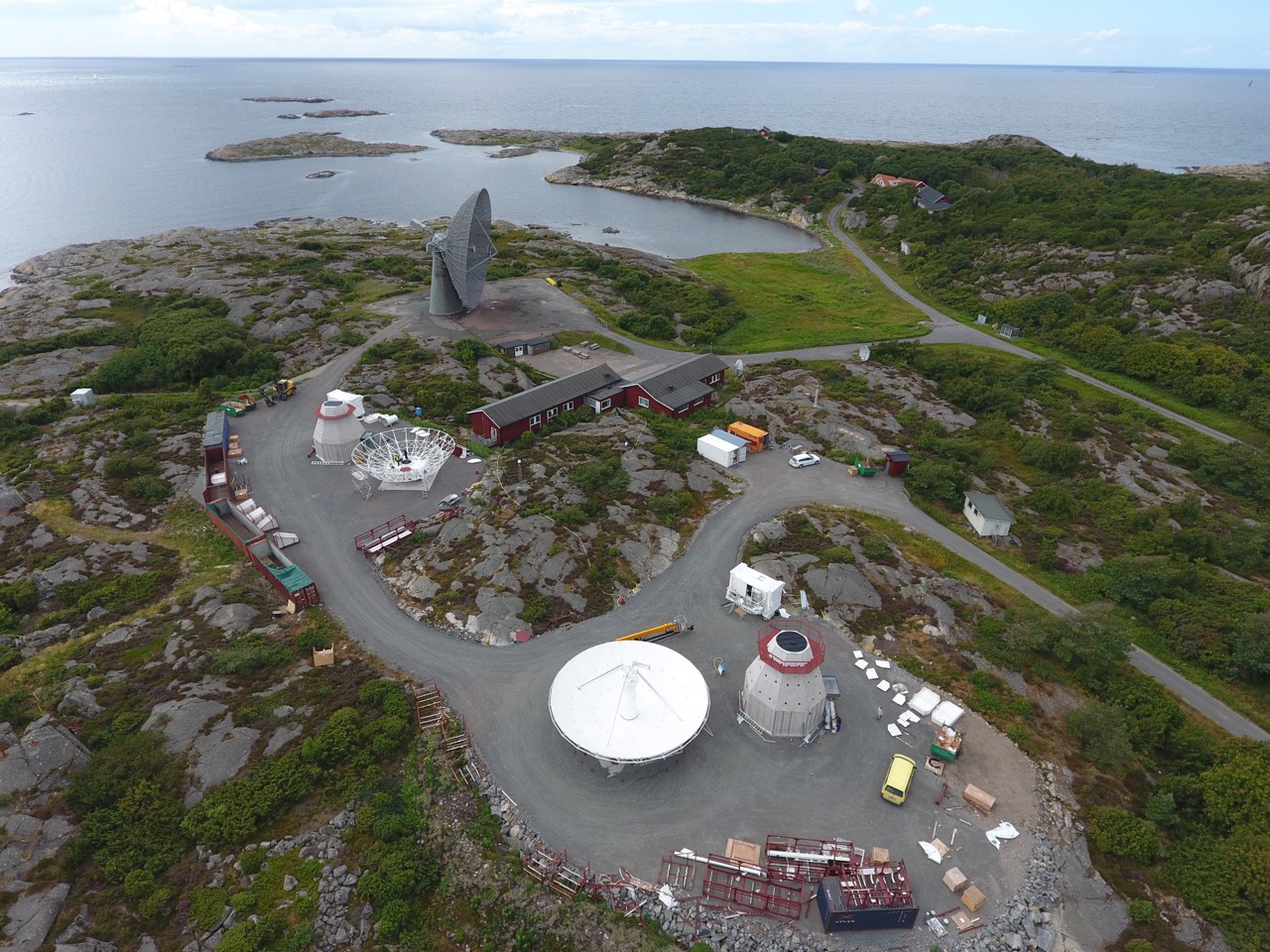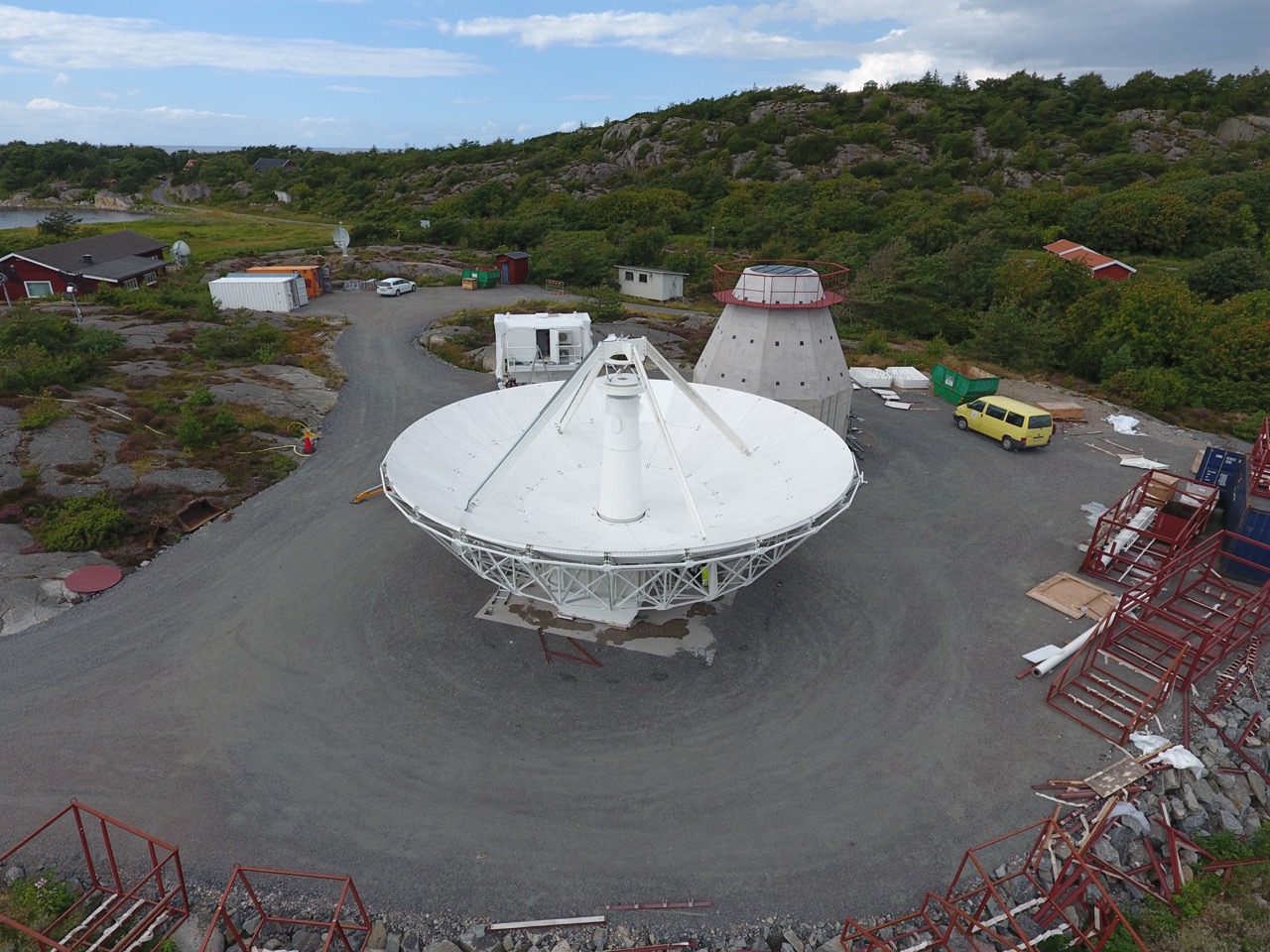...
New VGOS stations and station upgrades to VGOS
GGAO
"Failure and repair of the GGAO broadband cryogenics receiver" (PDF) from Ganesh Rajagopalan and Chris Eckert 22 Aug 2016
---
GGAO and Westford resumed their VGOS Demonstration Series sessions in November and have observed three more sessions of 1, 5, and 24 hours.
Arthur Niell - 2016 Jan 27
Kokee
The VLBI Signal Chain had the Sight Acceptance Review (SAR) and continued evaluating the entire VLBI system (antenna, field system, signal chain, etc). K2 observed with the VGT001 (see below) and presently resolving an issue with air condioner failure in the pedestal and impact on continued observing. The operational readiness review (ORR) is still projected to be executed in August.
Chet Ruszczyk - 27 July 2016
The observations for the commissioning phase of the 12m has been completed, ending with three 24 hour observing sessions between K2, Wf, and Gs. TChe data are being correlated and analyzed. We are working toward the VLBI Operation Readiness Review (ORR) now scheduled for August, which means release of final documentation, software and procedures.
...
Yoshihiro Fukizaki - 28 Jan 2016
Onsala
...
AuScope (Hobart, Katherine and Yarragadee)
Report Testing of the prototype Callisto feed was completed on the Hobart 12m in August, finishing with a successful fringe test with Ishioka and Kashima. A report on the Australia-Japan broadband fringe tests (PDF). is available. The receiver operated reliably and stably throughout, installation and operating procedures went smoothly. We are continuing to work on optimising the antenna optics. Still on track for a January arrival of the production systems.
Jim Lovell - 25 Aug 2016
---
Prototype testing on Callisto feed/receiver system at Hobart due for completion in mid August. The system is performing well but some issues with the 12m optics need addressing: subreflector optimization has helped but more work is required.
Fringe checks are planned with Hobart 26m, Kashima and maybe Ishioka and Kokee if there’s time.
Timeline is for delivery of production systems in January, with installation at all sites by June 2017. Possibility of observing below 3 GHz is questionable.
AuScope Operations funding OK until 1 July 2017 (140 days of observing). Work planned over next 11 months:
- Elevation jackscrew at Yg to be replaced
- Maintenance on Hb maser (will not interrupt operations)
- New azimuth cable wrap mechanisms to be installed at all sites before/during broadband upgrade. Same mechanism as Kokee
Jim Lovell, 28 July 2016
---
Initial testing of Stirling Cycle broadband system has been completed at Hobart. Upgrade of all three sites to broadband planned to be completed by mid 2017 (was hoped to be by the end of 2016).
...
GGAO, Westford, Wettzell, Yebes and KPGO Broadband Fringe Testing
...
Westford Mixed Mode Fringe Testing
On July 19th Westford tagged along in a mixed mode test (broadband and legacy observing) with RD1606. Westford observed the entire RD session, but the Haystack correlator will process 1 hour of data. Once the correlation procedures are verified and updated they will be sent to Bonn with the goal of expanding the knowledge of mixed mode processing, before USNO, and inclusion of broadband systems with existing legacy observations.
Chet Ruszczyk, Arthur Niell, Mike Titus, Mike Poirer - 27 July 2016
Technology Updates
DBBC3
DBBC3 Report
G. Tuccari
on behalf of the development team.
27/07/2016
A new calibration scheme has been implemented which allow which allow to perform in automatic almost all the settings. The initial characterisation remains to initial characterisation remains to be performed in laboratory and coded in the control the control software together with a ID in the ADB3L the ADB3L boards. The initial settings for such boards then boards then requires a novel strategy to optimally operate.
The DUCS control software in the latest implementation adopts implementation adopts such strategy and all the sampling boards whether boards whether required to operate with the DUCS have to be to be updated to the new method.
Firmware development continues and the 3DSC, full band at band at 4GHz, is operative under the DUCS. 3DDC is available in available in alpha version with different schemes of number of bbc bbc vs bandwidth.
The current implementation can support in a single CORE3H:
4 independend U&L bbc with 128MHz bwd (then 32 bbc in a full VGOS system)
8 independent U&L bbc with 64MHz bwd (then 64 bbc in a full VGOS system)
16 independent U&L bbc with 32-26-8-4-2MHz bwd (then 128 bbc in a full VGOS system)
Similarly the 3PFB mode is progressing and the current implementation can implementation can support in a single CORE3H:
1 PFB bank with 16 channels 256MHz bwd (then 128 channels in a full VGOS system)
4 PFB banks with 16 channels 64MHz bwd (then 512 channels in a full VGOS system)
In the next months laboratory and on-field test will be performed in performed in order to validate both the 3DDC and 3PFB modes in these first implementation.
...
The development activity is mainly concentrated on the realization of the unified control software which connects all the functionalities realised by the different parts of the system.
...

